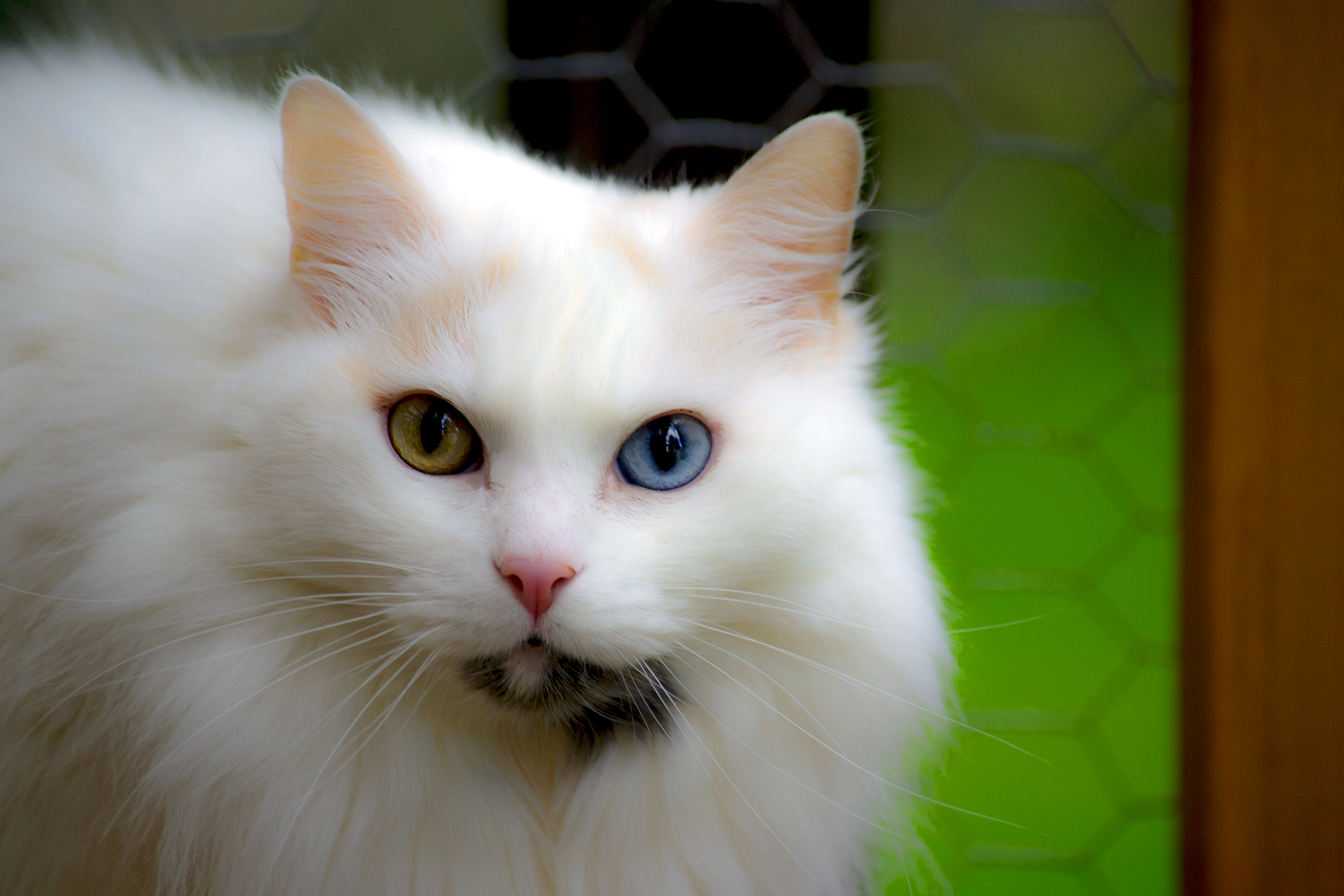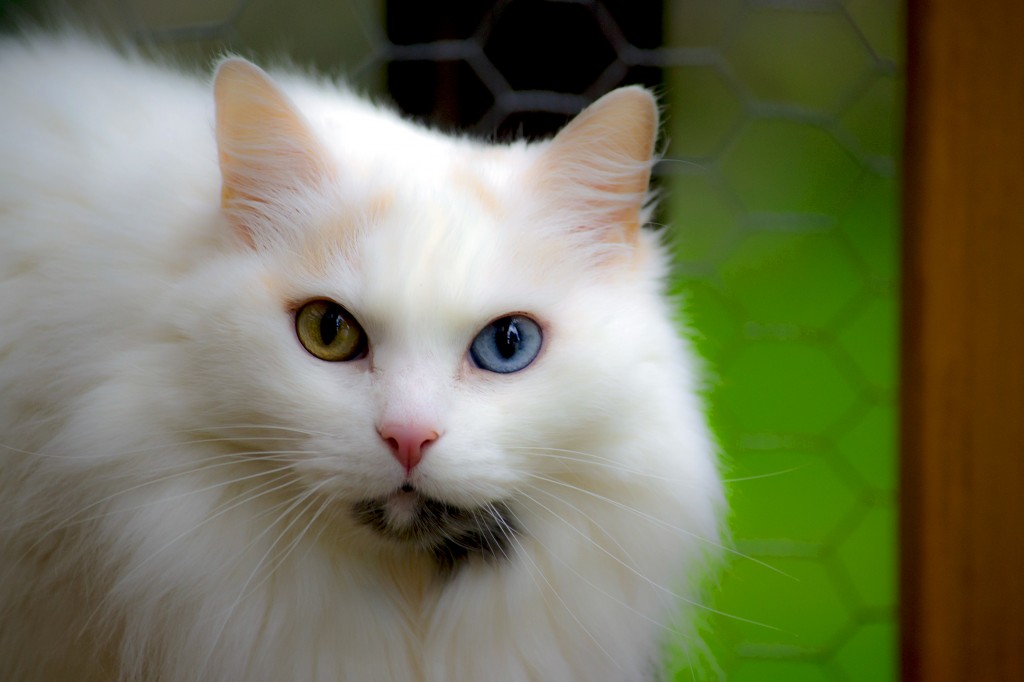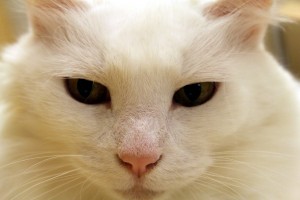Clean Cat Eyes 101

 If eyes are the windows to a person’s soul, a cat’s eyes should be the mirrors of their health, hopefully reflecting only GOOD health back at you.
If eyes are the windows to a person’s soul, a cat’s eyes should be the mirrors of their health, hopefully reflecting only GOOD health back at you.
As a conscientious cat guardian, you should perform your own optical check regularly by sitting with your cat in a well-lit room and quite literally looking her “in the eye.” Both eyes should be clear and bright, the area around the eyeballs white, and the pupils of equal size.
If all is well, proceed to gently roll down your cat’s eyelid, one at a time, with your thumb and examine the lining of the lid. It should be pink, not red or white. Any crusting you may find should be promptly wiped away with a damp cotton ball. Always wipe AWAY from the corner of the eye, and use a fresh cotton ball for each eye. Snip away any long hairs that may either be poking your cat’s eye or blocking her vision.
Often your cat’s own body language will alert you to a possible problem. If your cat is constantly squinting or pawing at her eye area, inspect both eyes carefully. With or without your cat’s signals, however, to determine if something is wrong with one or both of her eyes, look for the following:
Discharge
Watering
Red or white eyelid lining
Tear-stained fur
Closed eye
Cloudiness or change in eye color
Visible third eyelid
Should any of these symptoms be present, contact your vet immediately.
Some of the most common eye-related disorders in cats are:
Conjunctivitis: when one or both of your cat’s eyes is red and swollen, possibly with a discharge.
Third eyelid protrusion: when the third eyelid is visible or crosses your cat’s eye, indicating she may have a wound or may be suffering from diarrhea, worms or a virus.
Keratitis: when the cornea becomes inflamed, giving the eye a cloudy and watery look.
Cataracts: when the eye itself is opaque, a condition often seen in elderly and diabetic cats.
Glaucoma: when the cornea becomes cloudy and the eye enlarges due to increased pressure inside the eyeball.
Bulging eye: when there’s been an accident or trauma to the eye, or an eye tumor.
Retinal disease: when light-sensitive cells at the back of the eye degenerate causing partial or total loss of vision.
 Watery eyes: when blocked tear ducts or an overproduction of tears stain the fur around your cat’s eyes.
Watery eyes: when blocked tear ducts or an overproduction of tears stain the fur around your cat’s eyes.
While many of these disorders can be treated at home using vet-prescribed eye drops or ointments, others will require further investigation beginning with a cat ophthalmologist.
To forestall or prevent some of these conditions, ensure that your cat receives all of her vaccinations and is thoroughly examined annually by your vet. Certain eye conditions, when left untreated, can lead to impaired sight, even blindness.
